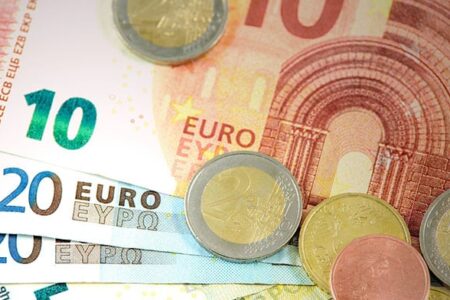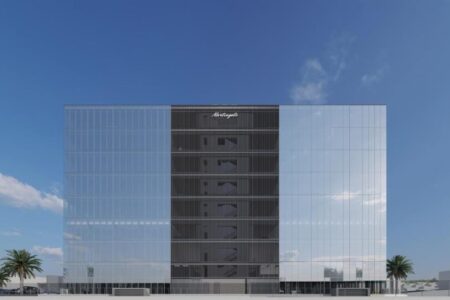08.09.2022
S&P Global Ratings this week announced an upgrade to its long-term issuer credit rating for the Bank of Cyprus (BoC) to ‘BB-‘ from ‘B+’, citing the bank’s improved asset quality and reduced risk, allowing the bank to withstand a harsher economic climate with greater stability. This follows Friday’s announcement in which the agency said it had revised Cyprus’ credit rating from BBB-/A3 to BBB/A2 with a stable outlook.
“The upgrade to Bank of Cyprus reflects significant improvements made in reducing non-performing loans, strengthening the bank’s position in a potentially more challenging environment,” S&P said in a statement.
Since the peak in NPLs in 2014, the bank has achieved a cumulative 96% reduction in non-performing loans through sales and organic efforts, according to the agency.
The agency noted that at the end of June 2022, the bank’s NPL ratio was 5.7%, adjusted for the latest sale of the Helix 3 NPL portfolio, which is expected to be completed at the end of the year, while at the end of 2019 the share of non-performing loans loans amounted to 30 percent.
In addition, the agency said the stable outlook balances its improved risk profile and capitalization with the need to improve efficiency and profitability.
“We expect management to remain focused on asset quality control while creating savings thanks to the recent voluntary exit plan,” S&P said, adding that the cost-to-income ratio will fall to about 63% at the end of 2023, from about 70 percent in 2021. He also noted that declining economic risks in Cyprus maintain the bank’s adequate capitalization and provide a reserve to support growth.
In this regard, the agency estimates that lower financial risk will have a positive impact of 115 basis points on the bank’s risk-adjusted capital, which stood at 8 percent at the end of 2021, adjusted for the sale of NPLs Helix 3.
“Therefore, we estimate that the capitalization of the Bank of Cyprus will remain steadily above 7% over the next 18 months, providing some room for a modest increase in its loan portfolio and covering potentially higher credit losses,” the agency said in a statement. We expect the quality of capital to be better compared to the respective Greek banks which, unlike the Bank of Cyprus, have large amounts of deferred tax on their books,” he added.
Regarding the broader banking system in Cyprus, S&P stated that Cypriot banks have made significant progress in eliminating NPLs since 2018 and have implemented improved lending practices.
After four years of selling NPLs, debt-for-property swaps and system-wide NPLs have fallen by more than 7 billion euros, or 71 percent, since 2018.
In addition, banks’ creditworthiness has proven resilient to the effects of the Covid-19 outbreak, with only 3% of loans subject to the installment moratorium becoming non-performing.
The agency also clarified that banks are adhering to tighter risk-taking standards, which should contribute to less deterioration in asset quality in the coming quarters.
He noted that in this regard, the average loan-to-value ratio for residential mortgages at the end of 2021 was a “convenient” 45%.
“However, the cleanup is not over yet,” the agency stressed, adding that non-performing loans remain high compared to the EU average at 11.4% of total loans at the end of May 2022, or from 16% and 18% sold assets.
The agency said that with NPL coverage at 50%, NPL reduction is expected to slow down in the future. “And that’s because selling loans will become more difficult, and most NPLs are household red loans that are difficult to transfer,” the agency explained.
S&P also estimates that the influx of new NPLs will mainly come from stage 2 loans (credit losses based on IFRS 9), which represent approximately 15% of total gross loans in Cyprus compared to the EU average. 9 percent.
“Hence, we expect the non-performing loan ratio in the Cypriot banking system to be around 10% over the next 12-18 months,” the agency said in a statement.
The agency believes that prolonged inflationary pressures, high energy prices and indirect effects from Russia, which was previously the main trading partner of Cyprus, will affect Cypriot banks, but the consequences will be at a “manageable level”.
According to S&P, the share of Cypriot banks in the professional and business sector in Russia is less than 2% of total banking system loans.
In addition, the agency believes that Cypriot banks are relatively more exposed to cyclical factors, as private sector leverage is higher compared to other European banks.
He added that they are also forced to increase their profitability, while non-Cyprus deposits, which account for 17% of total deposits at the end of June 2022, are a source of instability in their funding.
According to the agency, reducing their operating costs and their network, as well as accelerating their digital transformation efforts, will be key to improving the efficiency of Cypriot banks. Finally, the agency noted that an increase in key rates would benefit banks’ net interest income, as floating rates dominate in their loan portfolios.
















